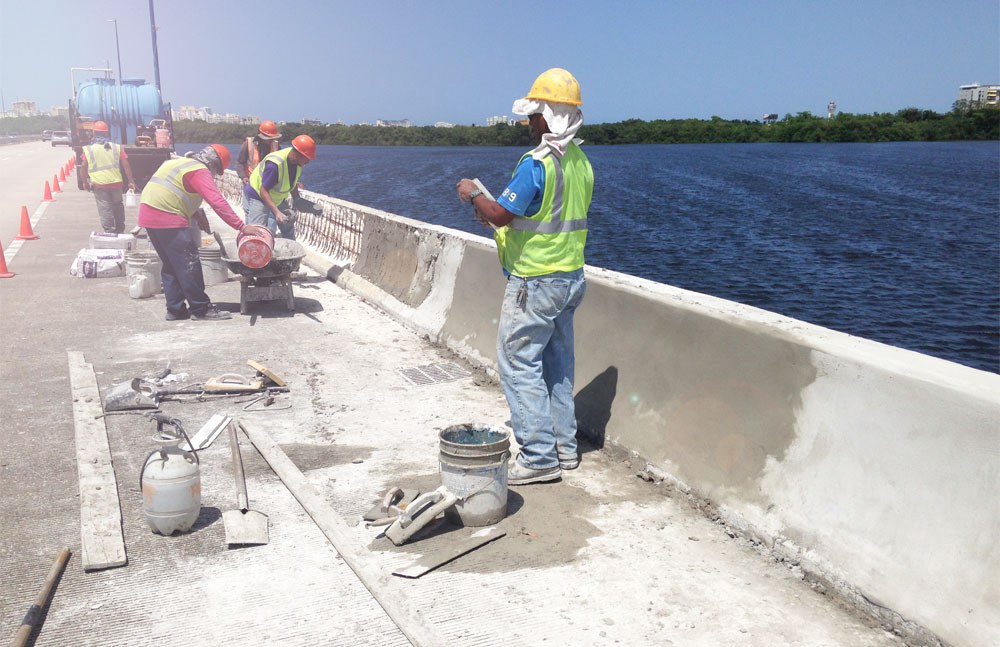
Working in hot weather poses serious health risks, including heat stress and heat-related illness. Often, the first signs of trouble are muscle cramps, pain and spasms in the abdomen, arms and legs. Other red flags can include headache, dizziness, fatigue, loss of concentration and nausea or vomiting. If workers aren’t able to cool down and hydrate, heat exhaustion sets in and can lead to heatstroke—and that can be fatal.
According to the U.S. Bureau of Labor Statistics, 36 of the 436 workplace deaths related to heat occurred in 2021. There's no federal standard on heat and workplace safety, although OSHA is working on one. To get ahead of the heat and keep workers and jobsites safe, consider the following tips.
Water, Rest, Shade, Repeat
It is vitally important to enforce rest periods as workers gradually build up their tolerance to working in the heat and humidity (see OSHA’s 20% rule). Set up shaded break areas (and shaded work areas when possible) and provide plenty of water. Sports drinks, coconut water, juice and fresh fruits are good supplementary options. Supply crews with cooling towels and consider adjusting schedules for work to take place during the cooler parts of the day.
Dress to Beat the Heat
Minimize personal protective equipment (PPE) time. Working strenuously in an area with no air movement and wearing nonbreathable protective gear increases the threat of heat illness significantly. If heavy gear and PPE must be worn, rotate job functions so that one worker isn’t forced to wear the gear for long stretches of time. Rotating job tasks also helps to more evenly distribute the load of strenuous activities, which minimizes exertion levels for individuals.
Breathable clothing. Whenever possible, workers should wear brimmed hats and lightweight, loose-fitting clothing that is light in color. Natural fiber materials, such as cotton, are preferred because they are breathable and absorb moisture well. Moisture-wicking clothing is another smart choice, especially in humid climates. The material draws sweat from the body so it can quickly evaporate, allowing the body to cool quicker.
Face masks. Wearing a face covering can be hot, so it’s important to choose a breathable fabric—again, like cotton. Face masks should fit snugly on the face but not be too tight. A tight-fitting mask will make it harder to breathe. Also, masks should not be worn after they become damp or wet. Have additional face coverings on hand to swap out if one gets too dirty or sweaty.
Cooling gear. There are plenty of products on the market designed to keep workers cool, from wicking and cooling neck and face gaiters to ventilated vests with gel packs to fan-equipped hardhats and jackets—and everything in between.
Plan Ahead & Take Preventive Action
Don’t wait for temperatures to rise before taking action. When estimating and planning projects, take into account hot weather impacts. Tools and equipment operate at the higher extremes of their temperature ratings during hot weather. Materials are more prone to warping, bleaching or melting. Concrete becomes more difficult to place and more likely to crack.
To counter the heat, plan to purchase fans to increase airflow in enclosed spaces when air-conditioning may not available. It also may be a good idea to use air-conditioned trailers as break areas. Schedule more frequent equipment maintenance tasks during warmer months and provide shade for tools and equipment, fuel and batteries. Arrange for just-in-time delivery of materials to avoid damage during storage and staging.
Use hot-weather concreting methods, such as using ice water when mixing. Using specific concrete mixes or admixtures also can help extend setting times and workability to avoid unsightly results or structural issues.
Finally, train employees to recognize the factors that lead to heat stress and heat illness. For more tips on staying safe and cool on the jobsite, check out OSHA’s Water. Rest. Shade. (#WaterRestShade) campaign.
We provide expertise in developing mixes for hot-weather concreting. Contact us to learn how we can help you.
Questions? Contact Vice President of Marketing Janet Ong Zimmerman at 714-793-1010 or jong@ctscement.com.
About Us: CTS Cement Manufacturing Corp. manufactures Rapid Set® professional-grade calcium sulfoaluminate (CSA) cement products and Komponent® shrinkage-compensating portland cement additive used to make Type K cement for new construction and concrete repair and restoration. Contractors, owners, engineers, and architects choose our products to quickly deliver highly durable and aesthetically pleasing projects. Visit www.ctscement.com for more information – and connect with us to see how contractors use our products: